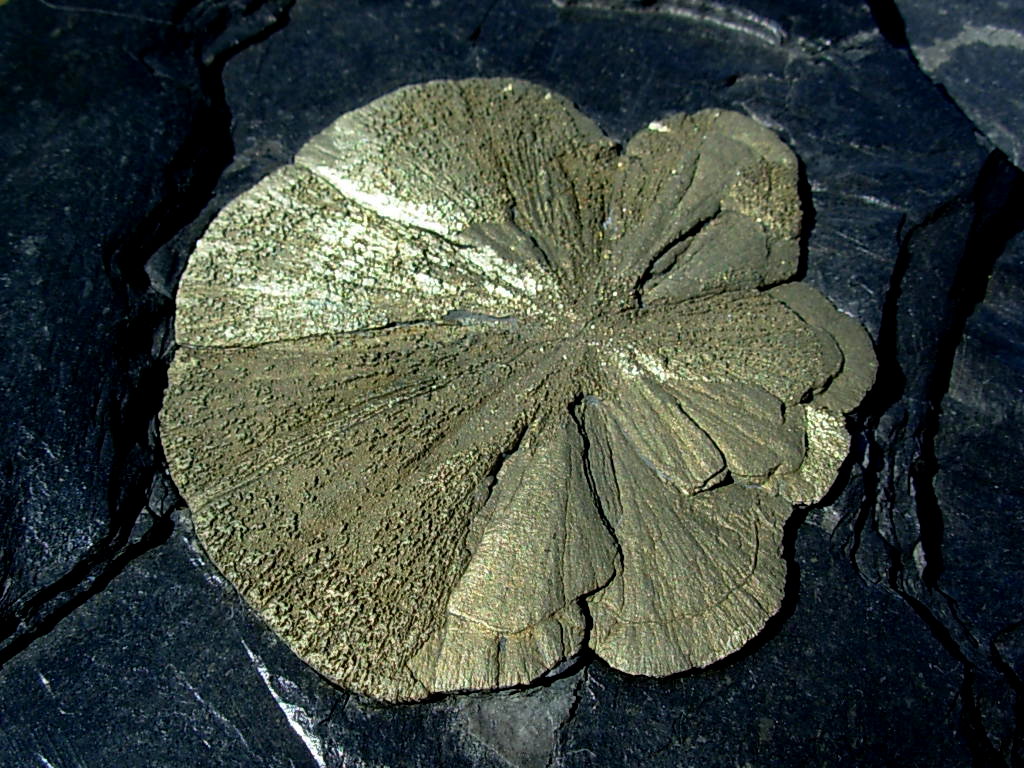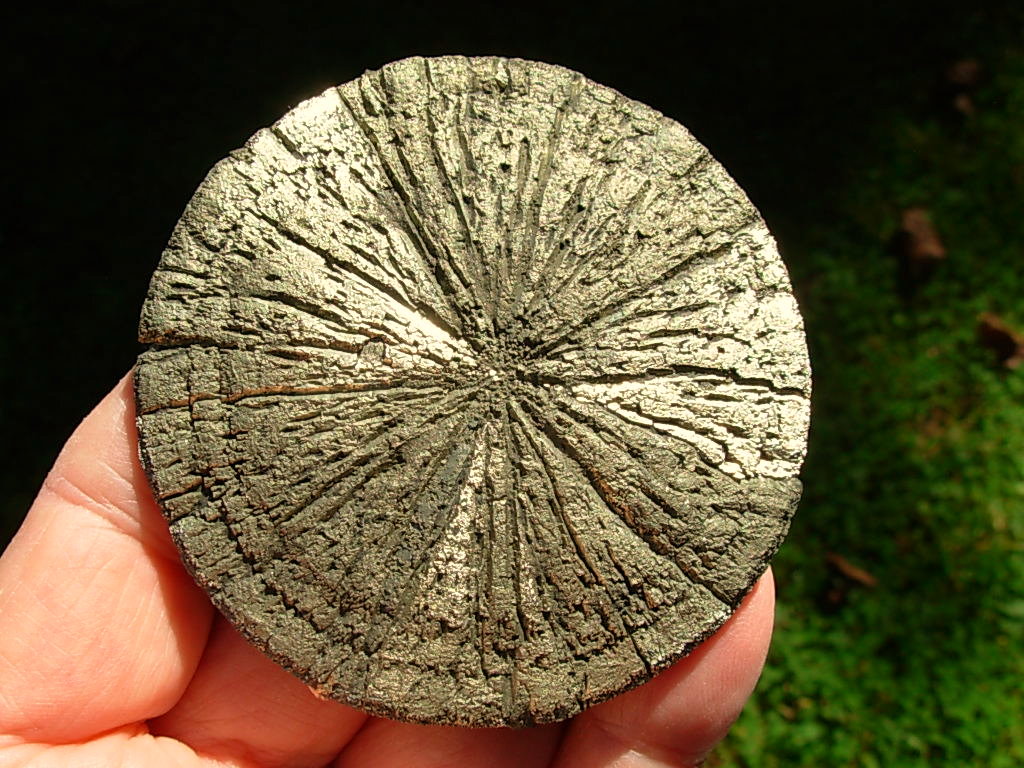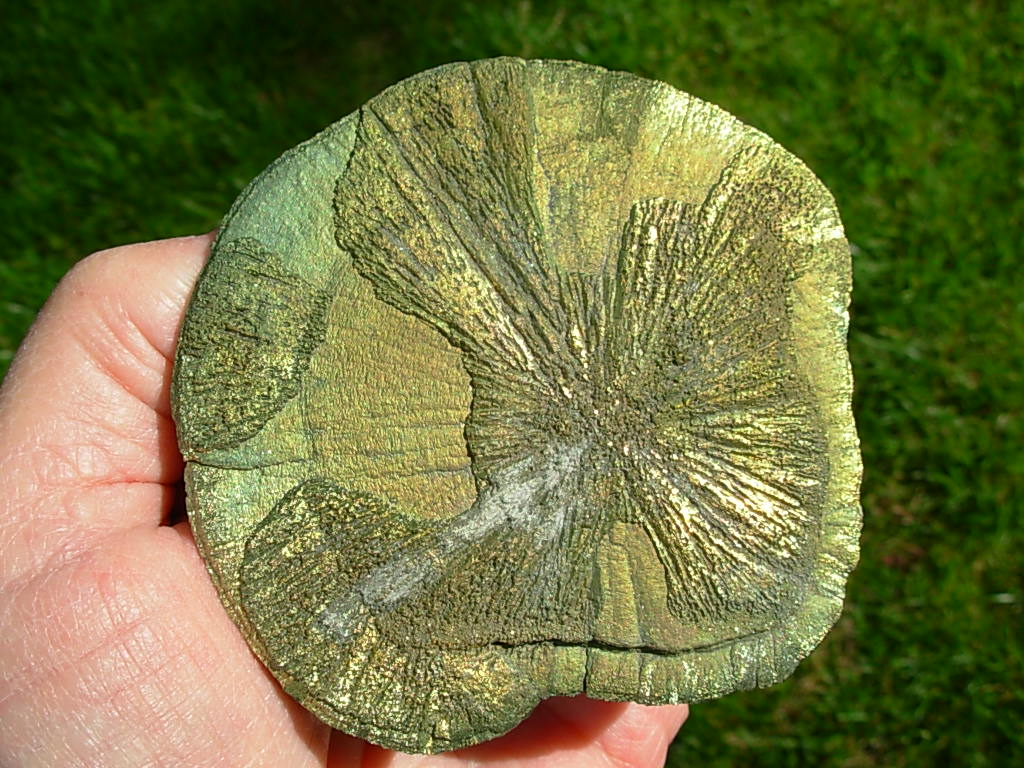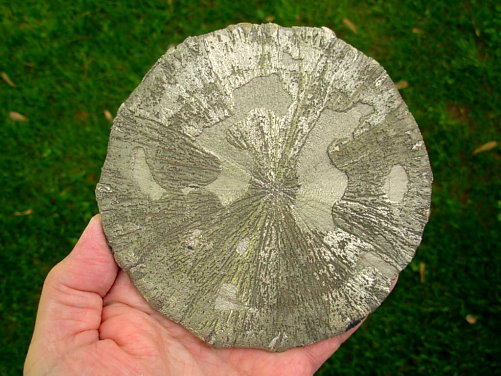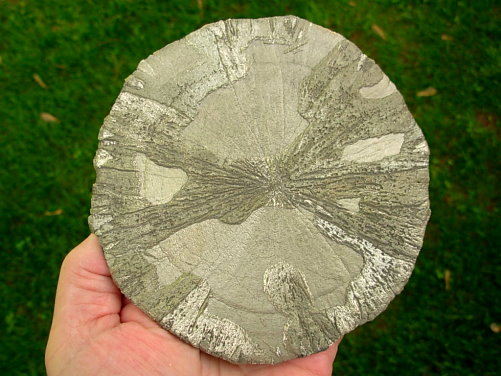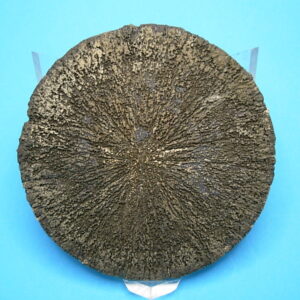Pyrite Suns (Pyrite Dollars)
These Pyrite Suns are from Sparta, Illinois. Pure Pyrite crystallization with no matrix, featuring radiating golden crystals that sparkle in the light. These are also known as Pyrite Dollars, Sun Dollars, or Miners Dollars. Collected in a coal mines three hundred feet below the earth's surface, these suns formed over 350 million years ago! The Fanned Crystal Structure is due to compressed growth between sheets of anthracite coal shale. At one time these were mistakenly thought to be fossilized sand dollars or lily pads. These are located by gently splitting the layers of shale and then must be cleaned by a labor intensive process which produces such wonderful treasures!
There have only been seven coal mines in the world where pyrite suns were found. These well-known mines, including the Baldwin Mine, the Marissa Mine, the Moffett Mine, the River King Mine and the Gateway Mine are all in the Shawnee Hills located in Randolph County, Illinois. Six of the seven mines are now closed with only the Gateway Mine (owned by Peabody Energy) still currently operating. Pyrite Suns used to be plentiful, but as time passed, the coal mines in Randolph County shut down one by one until it has become extremely difficult to obtain quality specimens either in matrix or removed individuals. The Gateway Mine is now the last source of Illinois Pyrite Suns. Due to new EPA regulations this famous coal will not be mined again. Coal with high sulfur content will no longer be used in the industry. Estimates are that the Gateway Mine will shut down in 2013 or 2014. Since pyrite suns are found 300 feet underground new finds are unlikely to occur again without mining operations. The pyrite forms that have been found in China (also called pyrite suns) are very different from the well-known Illinois Pyrite Suns.
Miners haul these delicate specimens out in their lunch boxes, hoping to preserve these beautiful specimens from getting destroyed. Some of the matrix specimens have been sealed or stabilized and the pyrite sun is loose and can be removed and replaced. Other specimens have not been stabilized or sealed and the pyrite sun is still affixed to the shale and cannot be removed. Of course it is possible that the suns have been removed, cleaned and glued back on the matrix. In any case, the value of these specimens has continued to rise each day as these become very rare finds.
There are also "iridescent" suns on the market. The coloring of the natural iridescence is caused by formation in high heat conditions, sadly though there has been a market flooding in 2013 of "fake" or "man-made" iridescent pyrite suns. A search of auction type sites will reveal a myriad of "Iridescent Pyrite Suns" that are altered natural pyrite suns. Around 2005 the practice of "bleaching" pyrite suns became prevalent among unscrupulous peddlers to increase the sale price for an iridescent specimen. Many honest sellers were not aware that these pyrite suns were altered. Iridescent suns formed naturally are extremely rare. Currently the market is flooded with "fake" iridescent pyrite suns. We have seen pyrite suns that have been soaked in bleach, heated with torches or ovens to dis-color the pyrite, and now there is a new breed of chemically treated fakes which are almost surrounded by a white opal-like glowing exterior with reds and blue color tones. People please...THESE ARE NOT NATURAL...THEY ARE FAKES! Caveat Emptor...(Buyer Beware)
Here is the problem with chemically treated pyrite suns
Besides making them prettier, it also makes them Much more susceptible to breakdown from moisture in the air. They have a considerable amount of marcasite intermixed which is typical for shale pyrites. Chemical treatment seems to accelerate the natural decomposition process. Most of these "iridescent" pyrite suns will be completely deteriorated in 5 to 7 years, leaving a display case full of crumbly gray-white powder giving off Lots of sulfuric acid fumes. We had several pieces that were chemically treated. Within 2 years in a dry Las Vegas, Nevada climate we started smelling the fumes being generated and after 4 years the piece was so deteriorated we had nothing left. Natural deterioration is normal with Marcasite specimens, but generally may take 20 to 30 years. This acceleration by chemicals so your pyrite sun looks prettier is not worth the aggravation!
Our suggestion is to not buy fake "Iridescent" suns, and, if you already have them, get rid of them and consider the loss as being the cost of an education that's worth a lot more than a colorful pyrite sun. Depending on your location and how you store your specimens, you'll start to notice that the low luster areas will get darker and darker, eventually turning into a powder, which will then turn white as it ages. This means that your specimen is starting to deteriorate (aka Pyrite Disease). After a little while longer, you will really notice the obnoxious "sulfuric" smell. Once the process has started you can do nothing to stop it. Your specimen will only get worse as time passes.
You will need to separate pieces showing signs of Pyrite disease from the rest of your collection. You can still have a separate display for those pieces. It is always hard to throw a nice specimen in the trash, but we've all done it at one time or another. Any specimen which contains even traces of marcasite is a gamble. These specimens need to be rarely touched and must be watched carefully. Some of these specimens may be in your collection for 30 years and be fine, while others will start to deteriorate the day after you get them. Pyrite Suns that come from a shale environment, as the Illinois suns do, will normally start to disintegrate anywhere from a few months to 20 years.

